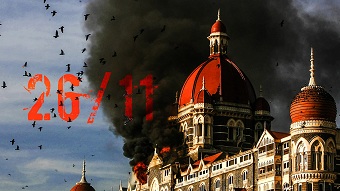India, ignored by the Central Intelligence Agency (CIA) over Pakistan during America’s “war on terror” and the decades preceding it, became the member of an exclusive surveillance group after the 26/11 Mumbai attacks, making it a formidable intelligence force, according to a book by journalists Adrian Levy and Cathy Scott-Clark.
The book, “Spy Stories – Inside the Secret World of the RAW and ISI”, released recently, says Pakistan’s entropy, despite being enriched with billions of dollars post 9/11, brought the American intelligence community, begrudgingly, to Delhi. In 2008, the Research and Analysis Wing (RAW), received an invite from US National Security Agency (NSA) to join a regional body known as SSPAC (Signals Intelligence Senior Pacific), which, the book says, was a “step up” for India, which had been trying to gain Washington’s attention for a very long time.
The members of this exclusive surveillance group included the so-called Five Eyes countries – the US, Australia, Canada, New Zealand, Britain – and also South Korea, Singapore, and Thailand. The SSPAC is a platform for sharing technical intelligence, and here countries pooled their signals, gathered through eavesdropping, but also built trust and learned new surveillance techniques from the world’s most powerful spy agencies.
The book says the RAW finally began breaking through and winning NSA plaudits. “The RAW officers were now ‘read into’ some highly classified reports and introduced to data produced by cutting-edge technology and coding that bored into Islamist hotspots.”
To find suspects and describe their associations – panning out to even wider friendship circles – involved pooling colossal amounts of sensitive metadata from an enormous volume of calls and messages in Five Eyes members states and (surreptitiously) beyond.
“This meant the sender and recipient details for emails, or the phone numbers someone called from, and to, as well as time stamps for when these messages, emails, and calls were sent and made. All of it would be funnelled into a new reference repository, known as SMAC, or the Sensitive Metadata Analytic Collaboration programme,” the authors write.
A significant part of the surveillance was “contact chaining,” a method used by British technical intelligence at GCHQ in Cheltenham, to describe entire networks linked to a single exposed phone. “Analysts examined calls, messages, and emails from one suspect and derived from them lists of others and their associates, building a matrix of association in top-secret projects, code-named CLASP and Prime Time,” the book adds.
Subsequently, work on tracking Thuraya satellite phones as well as countering burner phones was developed by agencies. The face of Kashmir’s new wave of militancy, Burhan Wani (Hizbul Mujahideen commander), who was killed by security forces on July 8, 2016, was, in fact, constantly tracked through his Thuraya satellite phone, the book claims.
Quoting a RAW defector identified with her ‘nom de guerre’, Monisha, the writers say that information for 26/11 had also come through SSAPC apart from 18 detailed briefs, with likely targets, numbers of attackers, etc shared by the CIA








